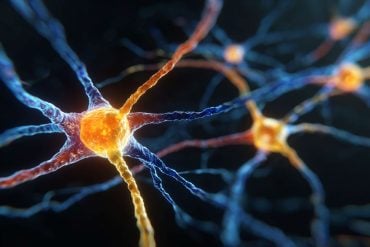Summary: Scientists have created an advanced visual neuroprosthesis that communicates bidirectionally with the brain, marking one of the biggest steps yet toward restoring functional vision. Unlike earlier devices, this closed-loop implant adapts in real time to neural activity, allowing the system and the brain to “learn” from each other.
In two blind volunteers, the implant enabled recognition of shapes, motion, patterns, and letters—showing stable, controllable visual perceptions. Although still in development, this work offers real hope for restoring usable vision to people who once could see but lost it due to retinal or optic nerve damage.
Key Facts
- Closed-Loop Breakthrough: The implant both stimulates and records neural activity, adapting stimulation patterns like a natural visual system.
- Functional Vision: Participants identified shapes, motion, patterns, and letters, showing major progress beyond simple flashes of light.
- Precision Implantation: A 4-mm microelectrode array was inserted using robotic guidance through an 8–10 mm opening, minimizing surgical impact.
Source: UMH
Blindness profoundly affects people’s lives.
Around the world, several laboratories, including the Biomedical Neuroengineering Lab at Miguel Hernández University of Elche (UMH), are developing visual prostheses based on brain implants.
These devices could eventually help restore functional vision to people who have lost their sight.

A study published in Science Advances reports the results achieved at UMH with a new generation of visual neuroprostheses capable of two-way communication with the brain.
This dynamic interaction establishes a direct dialogue with the visual cortex, bringing artificial vision closer to the natural visual process. The system has shown promising results in two blind volunteers.
“A cortical artificial vision system seeks to emulate how natural vision works,” explains UMH professor and study leader Eduardo Fernández Jover.
“It uses a small external camera built into conventional-looking glasses to replace the retina. The information captured by the camera is processed electronically and converted into electrical stimulation patterns sent to the part of the brain responsible for visual processing — the occipital cortex.”
“But vision isn’t a passive process; it’s a constant exchange of information between the eyes and the brain,” he continues.
“That’s why artificial systems must also reproduce this feedback loop to mimic better how the visual system truly functions.”
In any case, the goal is not to “see again,” but to regain functional vision—enough to support basic tasks like navigation, mobility, and reading large characters or numbers.
Until now, all visual neuroprostheses have been open-loop systems, meaning they did not take into account how neurons respond to electrical stimulation.
“When a device stimulates the brain, the neurons adapt, learn, and respond,” says Fernández Jover.
“The neurons we stimulate can become more sensitive or fatigued. Or the signal we send today might not be the one the brain expects tomorrow — because the brain itself has changed.”
“This study shows that we can establish a true two-way dialogue with the brain,” the UMH professor emphasizes.
“While generating the electrical impulses that evoke visual perceptions, we can simultaneously record brain activity and adjust the stimulation patterns according to nearby neurons’ responses — just as it happens under natural conditions.
“This closed-loop approach harnesses the brain’s adaptability and turns what was once a monologue into a dynamic conversation between technology and the brain, bringing us closer to natural vision.”
The study, conducted in collaboration with IMED Elche Hospital, involved implanting a tiny, 4-millimeter-wide device containing 100 microelectrodes. The team used a surgical robot and an advanced neuronavigation system to perform the procedure safely and precisely.
“This technology allows us to guide electrode insertion in real time with great precision,” explains Pablo González López, neurosurgeon at Hospital Doctor Balmis and IMED Hospitals.
“The entire implantation can be done through an opening just 8–10 millimeters wide, avoiding the need for a full craniotomy. As a result, participants can be discharged early and experience far less postoperative discomfort.”
Back in 2021, the UMH Biomedical Neuroengineering Lab successfully implanted a device in the brain of a blind volunteer, safely inducing the perception of shapes and letters with unprecedented resolution. Now, the team has taken a major step forward: developing a technology that bridges the gap between perceiving a flash of light and truly seeing the world.
This system not only writes on the brain — by delivering electrical patterns that evoke visual sensations — but also reads neuronal responses and adapts to them in real-time. “This technology can safely and stably induce visual perceptions,” says Fernández Jover. “The new system learns from the brain, and the brain learns from the system.”
Thanks to this bidirectional exchange, implanted participants have been able to recognize complex patterns, movements, shapes, and even some letters.
“By analyzing neural activity,” Fernández Jover adds, “we can now predict whether a specific electrical stimulation will produce a visual perception —and even estimate its brightness and the number of individual percepts.”
This enables the system to automatically fine-tune stimulation parameters, improving adaptation and accelerating the users’ learning curve.
These findings represent an encouraging step toward developing a visual neuroprosthesis that could help blind or low-vision individuals enhance their mobility and, ultimately, perceive and navigate their surroundings.
However, Fernández Jover stresses that “although the results are highly promising, many challenges remain. It is essential to advance carefully and avoid creating false expectations —this is still ongoing research.”
Currently, artificial vision implants remain in the preclinical stage and are not yet available to the general public. The ultimate goal is to restore vision in people who once had sight but lost it due to degenerative retinal diseases or optic nerve damage —conditions with no existing treatment options.
In these cases, the brain retains its capacity to process visual information, allowing the implant to transmit electrical signals to areas still capable of interpreting light and shapes.
“In contrast, in people who are born blind, the visual cortex never fully develops the ability to see,” explains the UMH researcher.
“These regions are reorganized for other functions such as language or spatial awareness through hearing and touch. Therefore, for now, an implant cannot ‘speak’ to a visual system that never developed —there is no pre-existing code to communicate with.”
This scientific work was conducted by Fabrizio Grani, Cristina Soto Sánchez, Alfonso Rodil Doblado, Rocío López Peco, and Eduardo Fernández Jover from the UMH Bioengineering Institute, together with Pablo González López, neurosurgeon at Hospital General Universitario Dr. Balmis in Alicante.
The researchers express their gratitude to the volunteer participants and their families for their dedication over the course of many months of effort. They also thank the medical staff at IMED Elche Hospital for their clinical support, which made this research possible.
Funding: This work received funding from the Ministry of Science, Innovation and Universities (DTS19/00175, PDC2022-133952-100); the European Union’s Horizon 2020 program (grant agreements no. 899287 NeuraViPeR and no. 861423 enTRAIN Vision; Innovative Neurotechnology for Society (INTENSE)); the Dutch Neurotechnology Consortium; and the Regional Government of Valencia (PROMETEO CIPROM/2023/25).
Key Questions Answered:
A: They developed a closed-loop visual neuroprosthesis that both stimulates the visual cortex and reads neural responses in real time, creating a two-way dialogue with the brain.
A: Earlier systems were “open-loop,” sending signals to the brain without adjusting to how neurons reacted. The new system adapts stimulation based on brain feedback—much closer to natural vision.
A: Blind volunteers were able to recognize shapes, movements, patterns, and even some letters, demonstrating functional visual perception far beyond previous implants.
About this neurotech and visual neuroscience research news
Author: Angeles Gallar
Source: UMH
Contact: Angeles Gallar – UMH
Image: The image is credited to Neuroscience News
Original Research: Open access.
“Neural correlates of phosphene perception in blind individuals: A step toward a bidirectional cortical visual prosthesis” by Eduardo Fernández Jover et al. Science Advances
Abstract
Neural correlates of phosphene perception in blind individuals: A step toward a bidirectional cortical visual prosthesis
Blindness is one of the most impactful disabilities in human lives. Cortical prostheses could one day restore functional vision in some blind subjects, but their success will depend on integrating advanced technologies to realize the therapeutic benefits they promise.
Most previous studies in humans used electrodes only for stimulation, which has made it challenging to precisely control the appearance of individual phosphenes. Herein, we implanted an intracortical microelectrode array of 100 electrodes in the visual cortex of two blind volunteers.
We recorded the neural activity around the electrodes while performing electrical stimulation to induce visual perceptions.
Besides showing how stimulation parameters influence perceptual thresholds, perceived brightness, and the minimum interval required to distinguish separate stimuli, our results indicate that subjective visual experience can be accurately predicted from the recorded neural activity.
These results highlight the potential for using the neural activity of neighboring electrodes to accurately infer and control visual perceptions in cortical visual prostheses.






